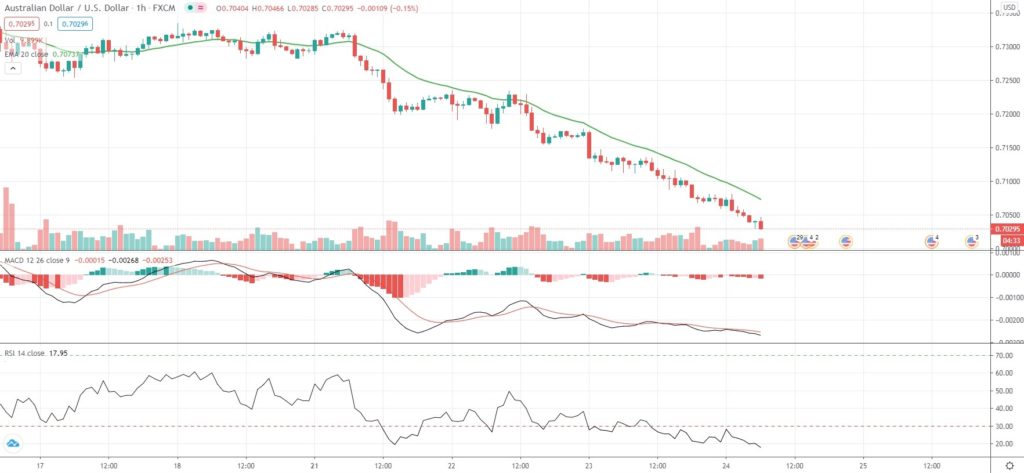AUD/USD retreated for a fifth straight trading day on Thursday, as it hit a fresh two-month low in late Asian session, pressured by prospects of further monetary policy easing in Australia, while investor risk appetite waned due to slowing business activity in the US in September and surging new COVID-19 infections in Europe.
“Risk is being sold across the board, and there is a big unwinding of dollar shorts,” Yukio Ishizuki, foreign exchange strategist at Daiwa Securities, said.
“Questions surrounding the coronavirus and the need for even more stimulus are turning flows back to the dollar.”
The US Dollar remained firm near a two-month high against a basket of six major peers, as a second wave of infections in a number of European countries and the likelihood of another round of lockdown restrictions in Britain have bolstered its safe haven appeal this week.
Additionally, several Federal Reserve officials strongly emphasized the need for more government fiscal support to stimulate US economic recovery from the coronavirus crisis.
Meanwhile, the Aussie dollar has come under pressure since Reserve Bank of Australia Deputy Governor Guy Debelle listed on Tuesday several policy options, including currency market intervention and negative interest rates, which the RBA was considering to achieve its inflation and employment objectives.
As a result, analysts at Westpac, Goldman Sachs and HSBC revised down their rate forecasts concerning RBA’s policy meeting on October 6th, as they now project a 15 basis point (0.15%) cut to the central bank’s cash rate from the current 0.25% level.
As of 6:54 GMT on Thursday AUD/USD was retreating 0.58% to trade at 0.7030, after earlier touching an intraday low of 0.7028, or a level not seen since July 21st (0.7011). The major pair has retreated 4.67% so far in September, following five consecutive months of gains. AUD/USD has plummeted 3.56% so far this week, while being set to register its worst performance since the business week ended March 20th.
From macroeconomic perspective, a report by the US Labor Department at 12:30 GMT today may show the number of people in the country, who filed for unemployment assistance for the first time during the business week ended September 18th, probably eased to 843,000, according to market expectations, from 860,000 in the preceding week.
A separate report by the US Census Bureau at 14:00 GMT may show new home sales dropped 1% to 0.890 million units in August, according to market consensus. In July, sales of new single-family homes in the country went up 13.9% from a month ago to an annualized rate of 0.901 million, or the highest level since December 2006. Data suggested a continued housing market recovery amid record low interest rates.
Also at 14:00 GMT, Federal Reserve Chair Jerome Powell and Treasury Secretary Steven Mnuchin are to testify before the Senate Banking Committee on coronavirus relief.
Bond Yield Spread
The spread between 2-year Australian and 2-year US bond yields, which reflects the flow of funds in a short term, equaled 3.6 basis points (0.036%) as of 6:15 GMT on Thursday, down from 3.9 basis points on September 23rd.
Daily Pivot Levels (traditional method of calculation)
Central Pivot – 0.7106
R1 – 0.7143
R2 – 0.7215
R3 – 0.7252
R4 – 0.7289
S1 – 0.7034
S2 – 0.6997
S3 – 0.6925
S4 – 0.6853






